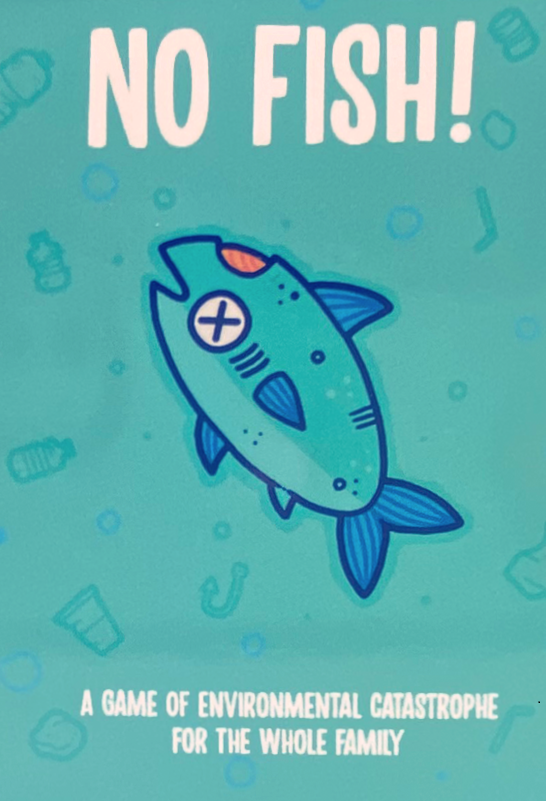What happens when the plastic replaces all wildlife in the ocean? You have No Fish!
| No Fish! (2021) | |||||
| Designer(s) |
Louis Wittig |
Artist(s) | Aaron Jay (randyotter3000) | Publisher |
Louis Wittig |
| 3-5 | 5+ | 15-20m | |||
The full title of the game is "No Fish! A Game of Environmental Catastrophe for the Whole Family." No Fish is a twist on the classic "Go Fish!" This game has an environmental message that can be used to teach children about where some of their plastic go when it is tossed into the trash and why it is important to reduce waste. Let's discuss how the game plays and how it sends a message to the players.
Box and Components
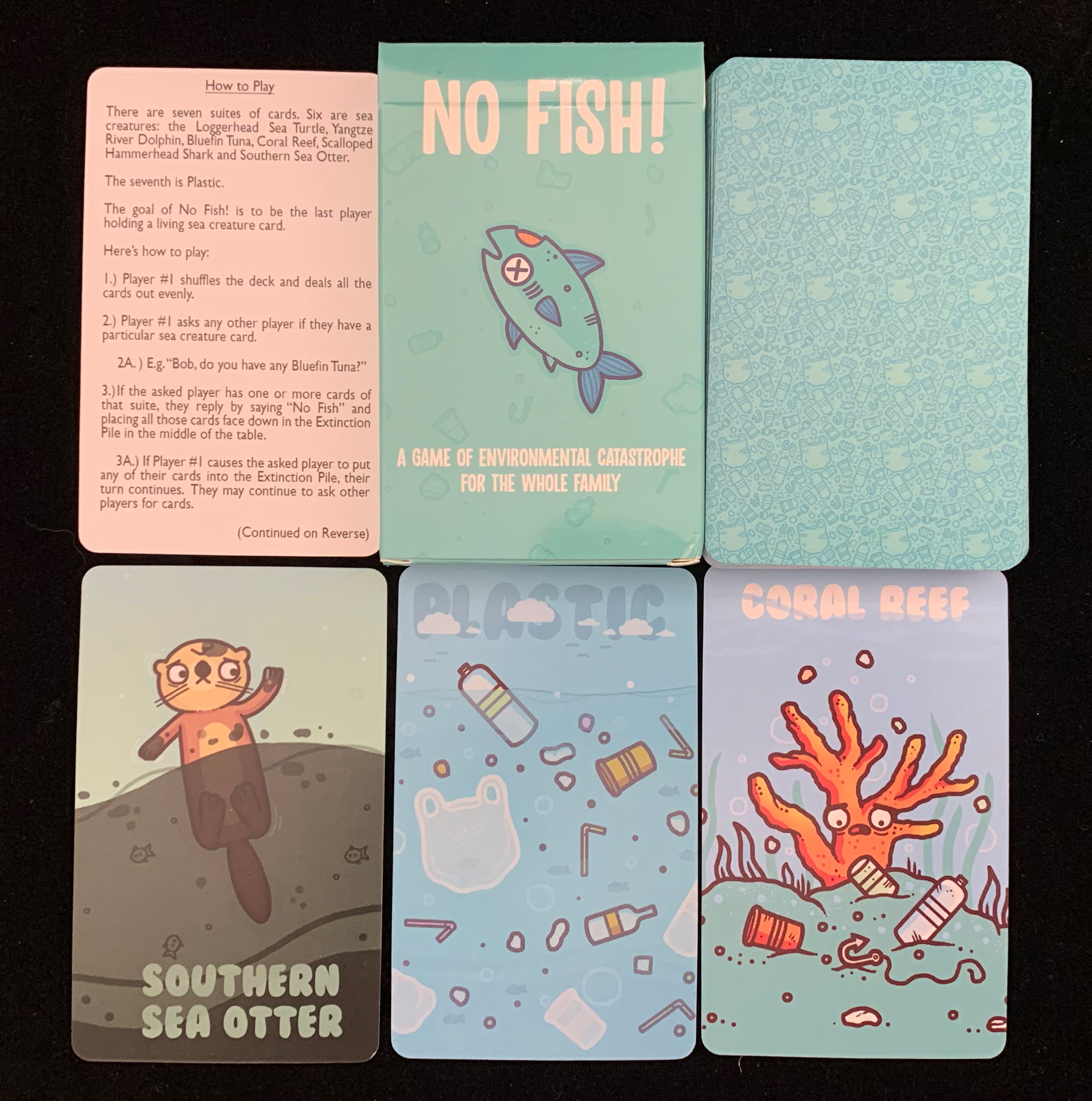 The game comes in a typical card tuck box. The box art is simple and clean. I did have a little difficulty initially opening the box without ripping it, but this has been a thing I have noticed with other games (a little flap trim will fix that though). The game comes with the following components:
The game comes in a typical card tuck box. The box art is simple and clean. I did have a little difficulty initially opening the box without ripping it, but this has been a thing I have noticed with other games (a little flap trim will fix that though). The game comes with the following components:
- 43 Cards: These cards broken up into 7 suits with each suit having 4 cards except for Plastic with 19.
- 19 Plastic
- 4 Bluefin Tuna
- 4 Scalloped Hammerhead Shark
- 4 Loggerhead Sea Turtle
- 4 Yangtze River Dolphin
- 4 Southern Sea Otter
- 4 Coral Reef
- 1 Rules Cards
- Tuckbox
The quality of the cards are pretty standard but good; they are also a little bigger than your standard cards coming in at 2.45"x3.95" (standard is 2.5"x3.5"). They have a nice glossy feel, and the artwork pops out very well.
Mechanics
Setup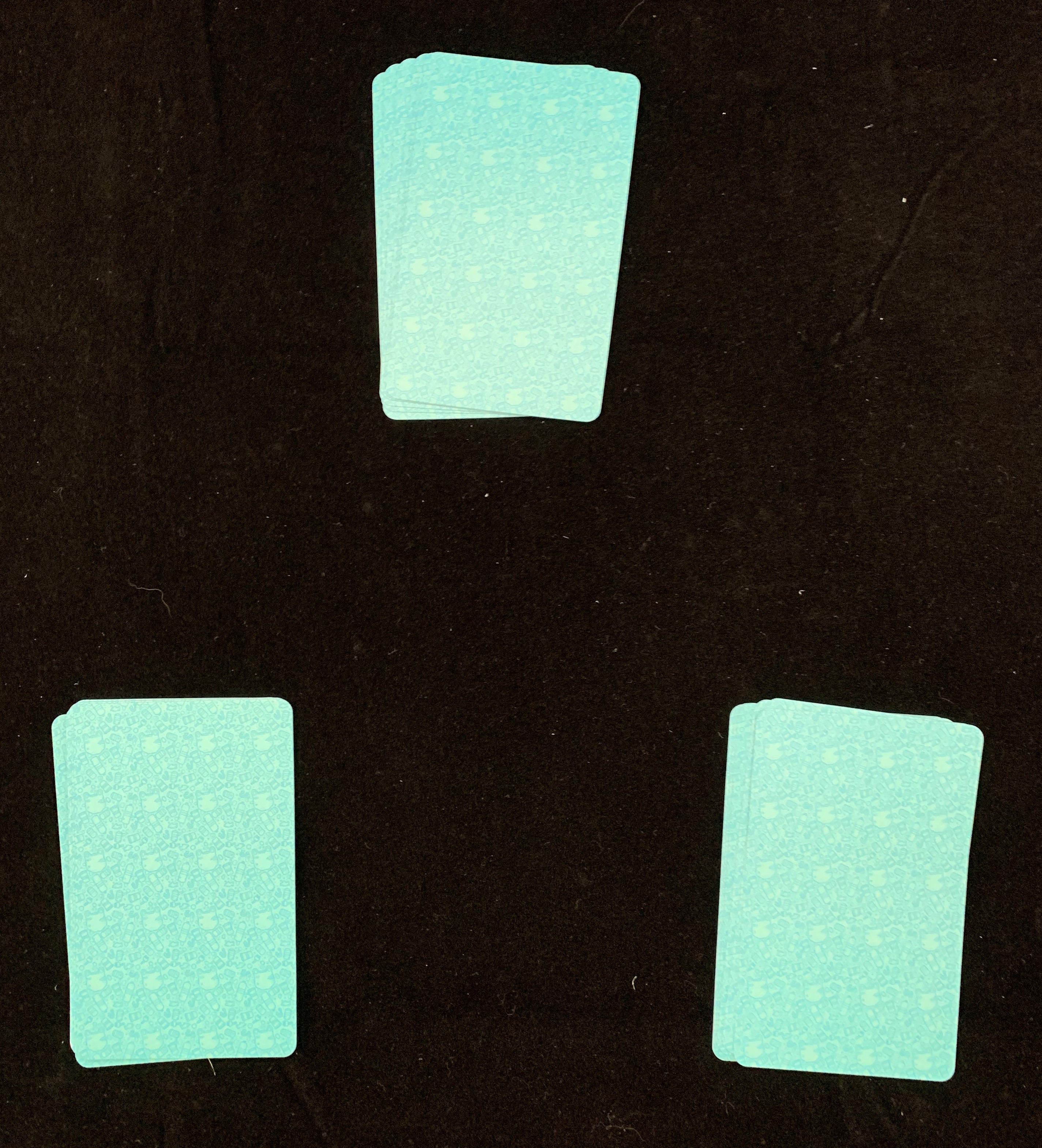
Shuffle all of the cards and deal the cards out to each player evenly; cards that can't be dealt out evenly are simply removed from the game. Select a first player and begin play.
Player Turn
- The active player will ask a specific person if they have a certain animal card in their hand.
- If the asked player does have that card, they must say "No Fish" and discard all cards of that type from their hand to the discard pile (Extinction Pile). The active player may take another turn repeating this process (repeating until they are told "Mo' Trash").
- If this causes the asked player to no longer have any animal cards left in their hand, they must say "My Ocean is devoid of life. So it goes," place their remaining cards face up on the table, and are out for the rest of the game.
- If the asked player does not have that card, they must say "Mo' Trash" and hand the active player half of their plastic cards (rounded up). This ends the active players turn.
- If the asked player does have that card, they must say "No Fish" and discard all cards of that type from their hand to the discard pile (Extinction Pile). The active player may take another turn repeating this process (repeating until they are told "Mo' Trash").
The next player repeats the steps above.
End Game 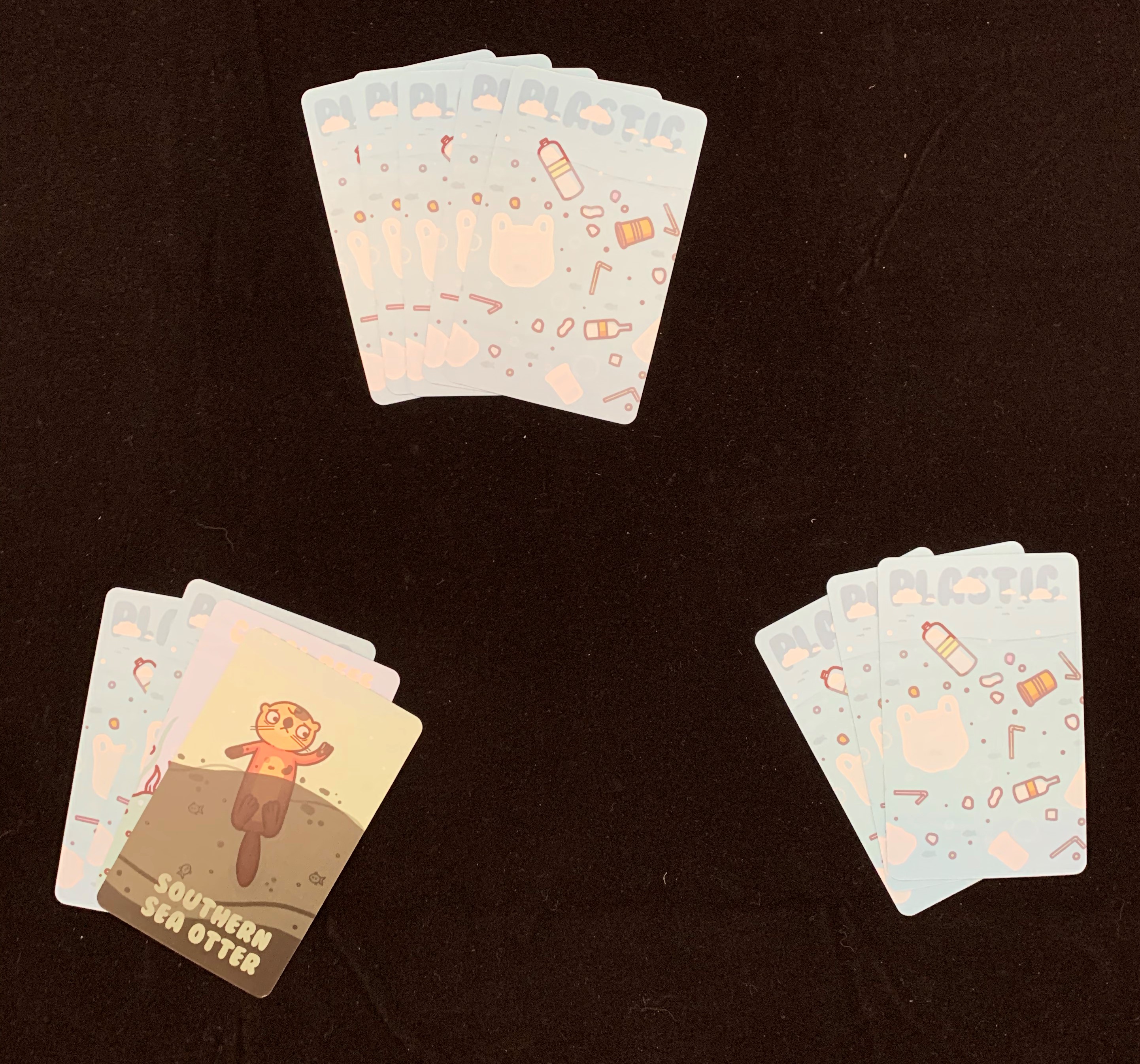
Once there is only one player with animal left in their hand, the game is over. The player with an animal left in their hand is the winner and must say Behold my biodiversity. I am truly Lord of the Seas! and the losers must say "You are the winner. This is what winning looks like now." Obviously, the message being basically "Sure, you won, but at what cost" as the players see all of the plastic that could not be discarded and how few animals remain. Essentially, just because one players "ocean" still has animals left, it is only a matter of time before even their animals will be gone with all of the plastic remaining.
House Rules Ideas
I like the premise of the game, and I am sure it works well for younger children. For those a bit older, the rules are may be a little too simple. I understand the goal is to make a simple game children will enjoy while also learning a little bit about the risk of having too much wasteful plastic. However, the issue I see is the act of handing your plastic over to another player has no real mechanical impact other than maybe tricking people into thinking you may have more animals than you do. I do like the game, but I do feel like the game should have some house rules or variants of some sort. If I were to play this on a more regular basis, here are a couple rule sets I might use instead of the included rules. Neither of these have been tested so some balancing is probably required; maybe I will update this article if I have a chance to run some more games with a group.
Point Based Rules
Gameplay would remain the same, but once there is one player left, players will earn points for cards they had left as such:
- +1 point for each Animal cards
- -1 point for every pair of Plastic cards
Keep a running total between games, and play for an agreed upon number of rounds. Maybe play a number of rounds equal to the number of players. Whoever has the most points wins!
Plastic Removal Rules
Using most of the same base game rules, but instead of trying to just have animals left, try to be the first to remove all of your plastic. I would say with this setup, you will have a different setup at the beginning of the game. Separate the plastic cards from the animals cards. Deal out an equal number of plastic cards to each player. Shuffle the animal cards and deal out an equal number of those cards to each player.
When you correctly ask a player for a certain animal, you discard a number of plastics from your hand equal to the number of cards they discard. Alternately for a longer game, correct guesses discard just one of that animal card from the opponent and one plastic card from your hand. Discarded cards would be face down so there is no card counting.
Once a player has only animal card remaining, they reveal their hand and win the game!
Final Thoughts
Again, I like the game, but I do feel it is lacking just a little. It is perfectly fine for the age group the game is targeting, but I do feel it could be a little more with some variant rules. Perhaps the designer has some ideas for variants that they can post to their website to provide a little more replayability or include on a card in future print runs. Luckily, the game is very reasonably priced so even with the current rules, players can get enjoyment out of the game. I like the quality of the product and the artwork (well, I like the art style though I get a little sad knowing what is happening to the creatures).
In terms of the message it is conveying, I think this is an excellent topic that should be brought up sooner than later with children. Unfortunately, children are going to have to clean up the mess generations before them have made. I do worry that the artwork on some of the cards might be a little much for some families so I would suggest looking at the artwork and deciding if your children can handle the dark reality shown on the animal cards.
So if you like the idea of teaching your children a little bit about environmental issues in the form of an easy to learn game, I recommend checking out "No Fish! A Game of Environmental Catastrophe for the Whole Family."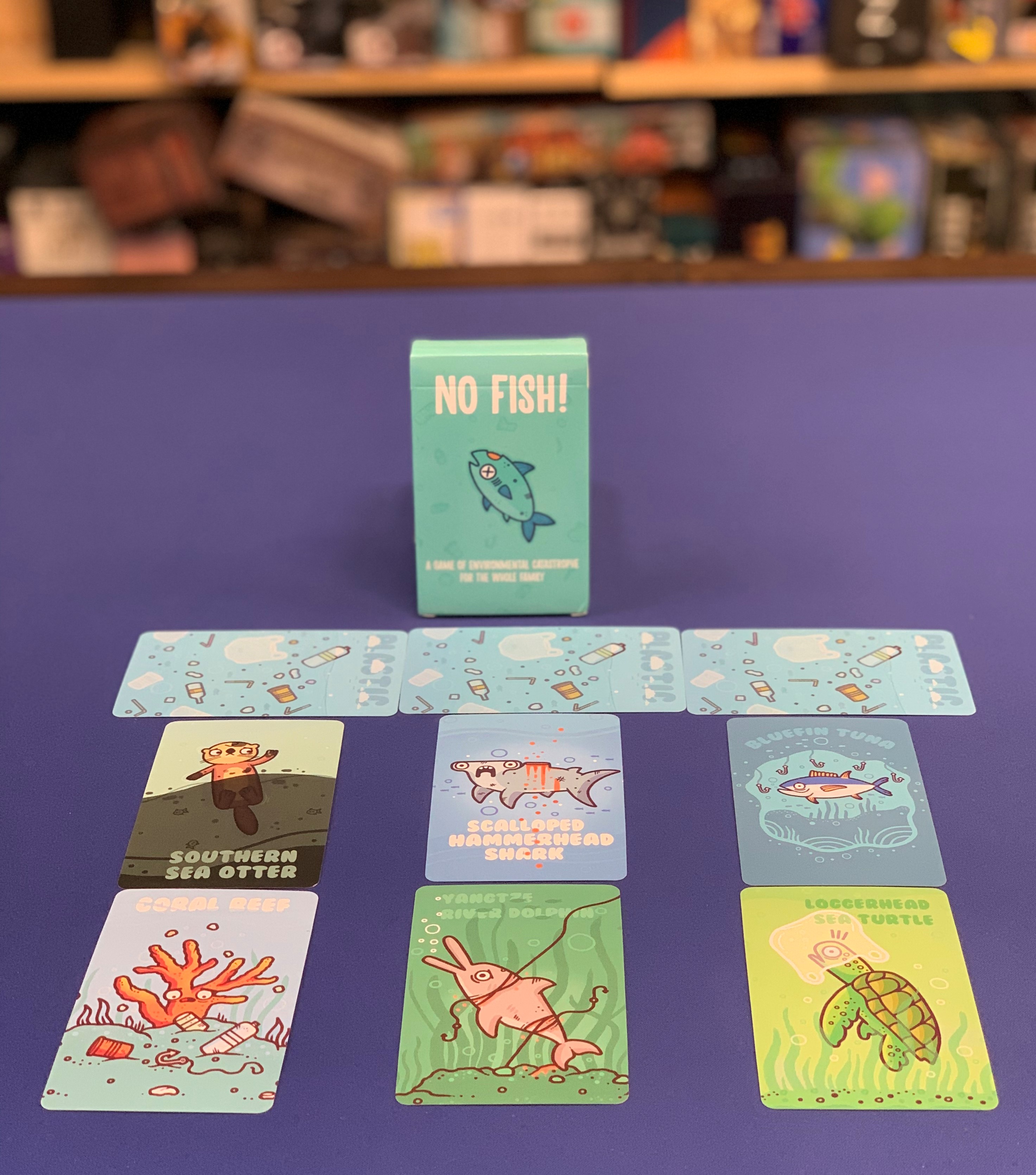
Links/Media
<bgg link coming soon!>
Disclosure
We received the product in order to write an honest review; all reviews reflect the honest opinions of the writer.

